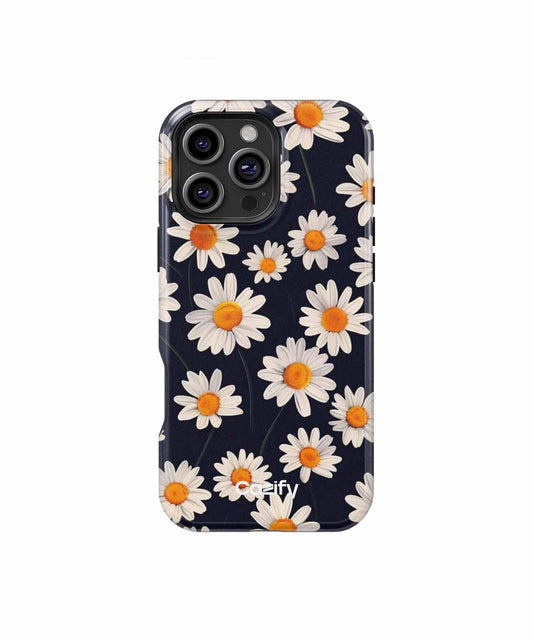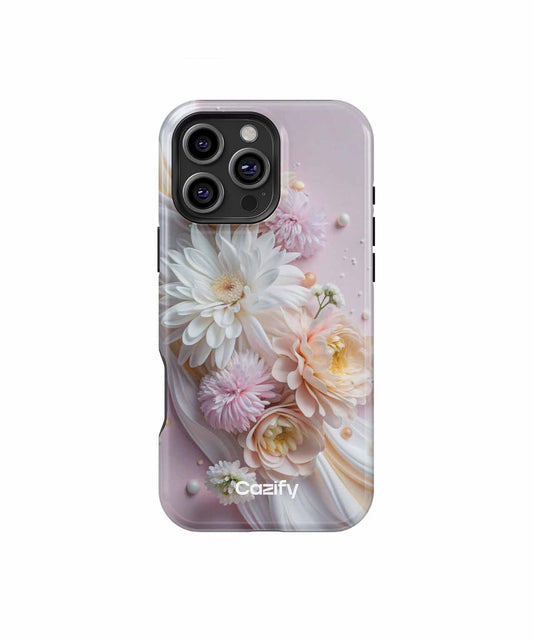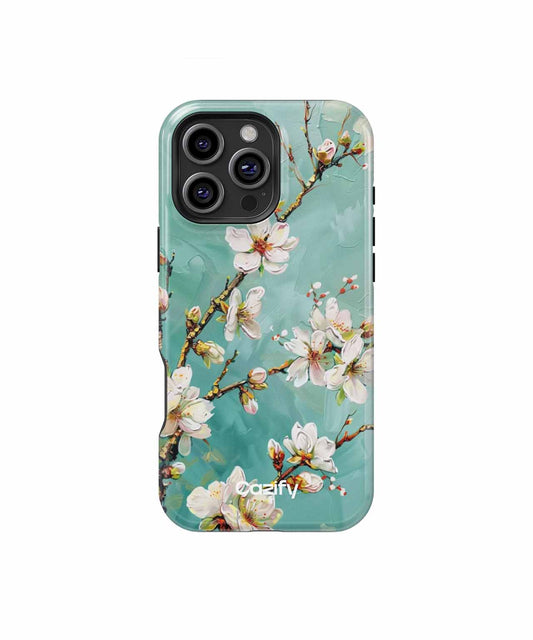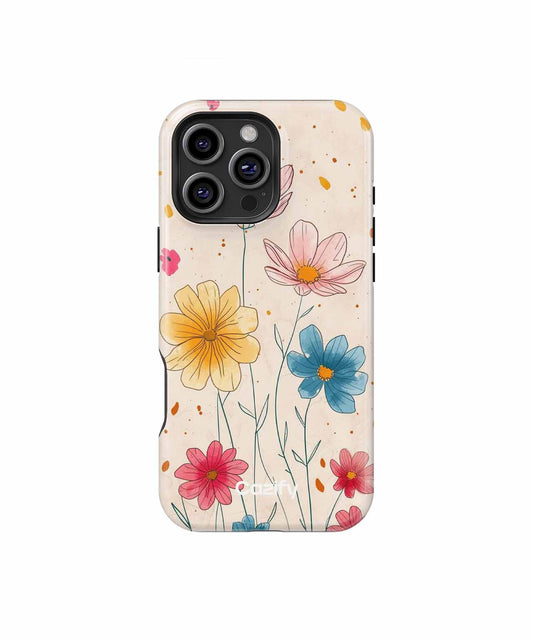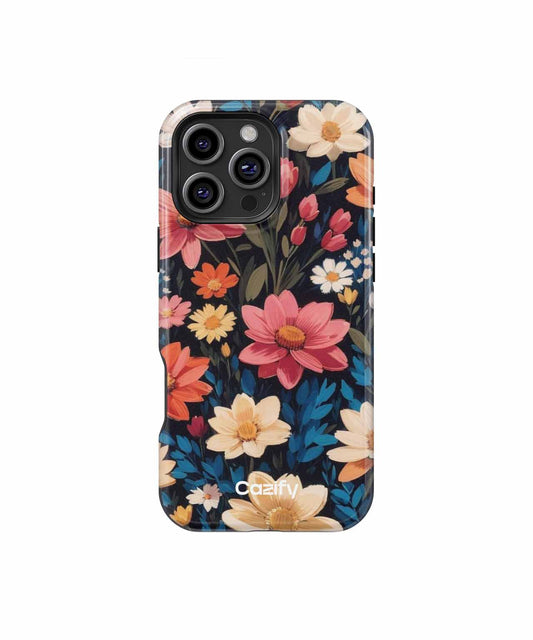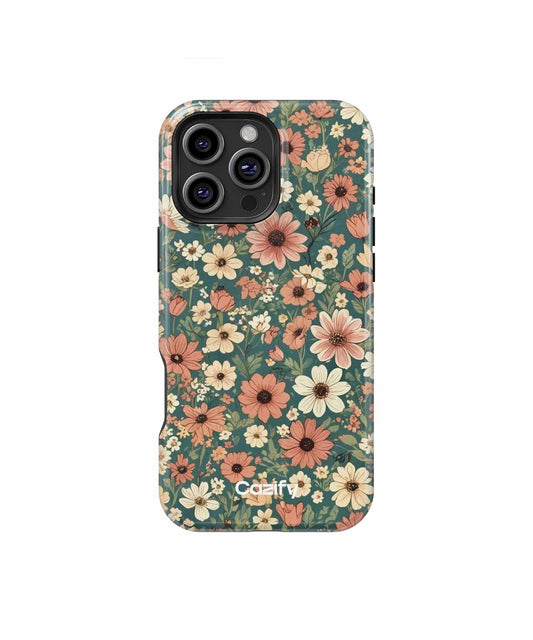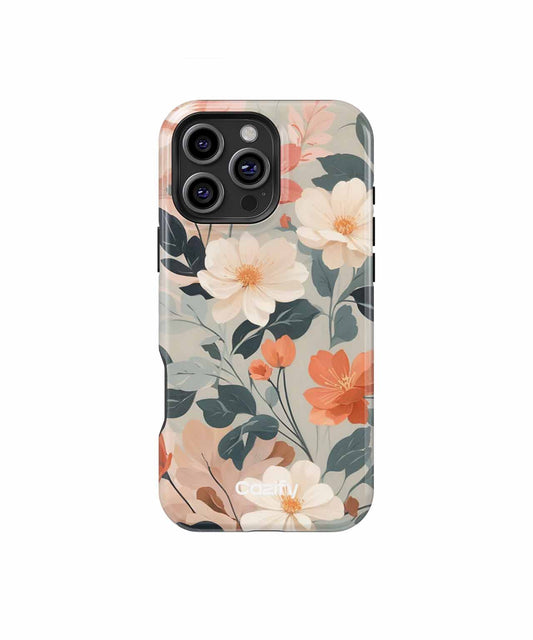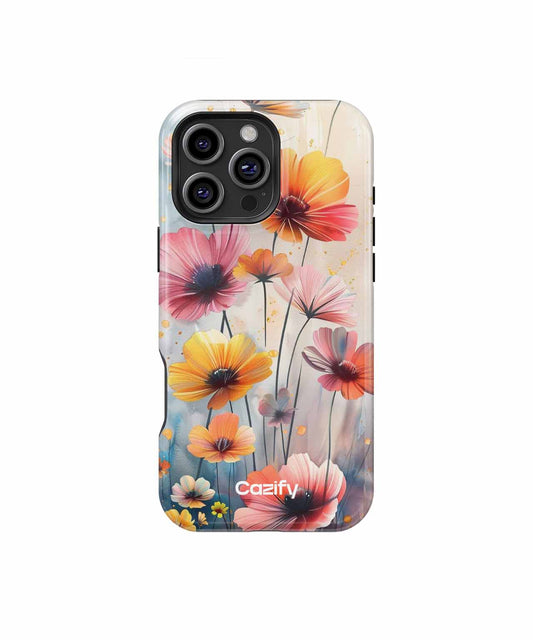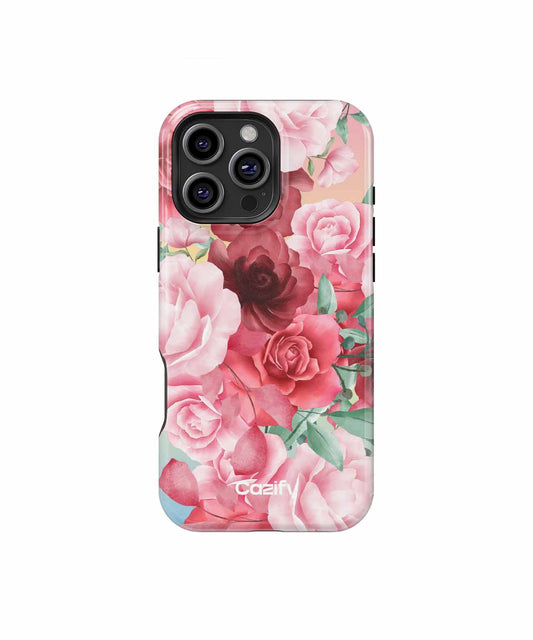
Why a Good iPhone Case is a Must-Have Accessory
Share
Introduction: The Importance of Protecting Your iPhone
An iPhone is more than just a communication device; it is an essential part of modern life, acting as a hub for personal, professional, and entertainment purposes. With users relying on their iPhones for everything from storing sensitive data to navigating unfamiliar locations, ensuring its physical safety is crucial. Despite Apple’s impressive advancements in design and manufacturing, the sleek glass-and-metal construction of an iPhone can still be prone to damage from daily wear and tear, accidental drops, and unexpected impacts.
Replacing or repairing an iPhone can be an expensive and time-consuming process. In some cases, even minor damage can compromise usability, leading to issues such as cracked screens, malfunctioning sensors, or diminished water resistance. For those who use their devices for work or other critical functions, downtime caused by such incidents can result in inconvenience or financial consequences. Therefore, proactive measures to maintain the integrity of the device are essential.
Environmental factors also play a significant role in a smartphone’s lifespan. iPhones are often exposed to dust, moisture, and temperature changes, all of which can degrade the device over time. Without adequate protection, these elements can impact performance, risking further complications that may go unnoticed until they escalate. Protection becomes particularly important for individuals who frequently travel, engage in outdoor activities, or use their phones in unpredictable conditions.
Investing in appropriate iPhone protection is not just a matter of aesthetics. It is a practical approach to safeguarding an investment, preserving productivity, and minimizing avoidable expenses caused by unintended accidents or exposure to harmful conditions. Taking preventative action can significantly extend the device’s lifespan, enhancing its value over time.
How Physical Damage Can Void Warranty and Insurance Claims
Physical damage to an iPhone can directly impact the eligibility of warranty and insurance claims, making it essential to safeguard the device. Most manufacturers, including Apple, detail specific exclusions in their warranty policies that cover defects in materials or workmanship but explicitly exclude damage caused by drops, impacts, or misuse. This means that even a minor crack in the screen or dent in the device’s casing often renders the warranty void, leaving users responsible for repair costs.
Similarly, insurance policies on smartphones typically require the device to meet certain conditions for claims to be valid. Many policies explicitly state that preexisting damage can disqualify coverage for further repairs or replacements. If an iPhone shows signs of physical impact, such as shattered glass or bent frames, insurers may classify it as user negligence. This can result in claim denials, even when the damage extends to internal components that are otherwise covered.
Damage beyond the surface can also compromise the device’s functionality, leading to long-term issues. For example, a cracked screen can allow dust and moisture to seep into internal hardware, causing irreversible harm over time. Insurers and manufacturers commonly assess such damage as preventable, holding the owner accountable for the lack of proper protective measures.
Choosing not to use a reliable case increases the likelihood of scenarios like these. A durable iPhone case mitigates the chances of drops or impacts causing significant damage. By preventing avoidable harm, users can preserve both the device’s resale value and the validity of their warranty and insurance. Failure to take precautionary steps to protect the device is often seen as neglect, which can further affect the claims process.
The Cost of Repairing an Unprotected iPhone
When an iPhone is not safeguarded by a reliable case, the financial consequences of accidental damage can be significant. Smartphone repairs are notoriously expensive, especially for premium devices like the iPhone, which features advanced technology and delicate materials. From cracked screens to internal hardware damage, the potential costs of repairing an unprotected device quickly add up.
Apple’s proprietary components and cutting-edge design make repairs particularly pricey. For instance, replacing a shattered screen on a newer iPhone model can cost anywhere between \(200 and \)400, depending on the level of damage and warranty coverage. If the device suffers liquid damage or requires more extensive repairs, such as replacing the motherboard or other internal components, fees can reach upwards of $600. These figures can increase further for users without AppleCare+ or relevant warranty protection.
Another factor contributing to high repair costs is labor. iPhone repair specialists, whether through Apple’s Genius Bar or third-party repair services, often charge a premium for their expertise, especially for more complex repairs requiring delicate handling and precise tools.
In some cases, an unprotected iPhone may sustain irreparable damage. This leaves users with no choice but to invest in a replacement device, a decision that can cost over $1,000 for newer flagship models. Beyond financial costs, time spent scheduling repairs, mailing devices, and waiting for completion can disrupt daily routines.
Given the heavy financial burden tied to repairing an unprotected iPhone, prevention becomes essential. Investing in a durable phone case can save users money, time, and considerable stress by minimizing risks associated with accidental damage.
Key Features to Look for in a High-Quality iPhone Case
When selecting an iPhone case, it is essential to prioritize key features that ensure both protection and functionality without compromising on style or usability. A high-quality iPhone case combines durability, aesthetics, and practicality to deliver the best experience for device users.
1. Material Durability
The durability of the material is a critical factor in protecting the iPhone from accidental drops, scratches, and wear. Cases made from materials like polycarbonate, thermoplastic polyurethane (TPU), or a blend of both can absorb shocks effectively. Leather and silicone options offer additional benefits, such as a premium feel or enhanced grip.
2. Drop Protection
A robust iPhone case should include reinforced corners and raised edges to safeguard the screen and camera lenses during falls. Multi-layered protection or military-grade drop-resistant certification is especially valuable for those seeking maximum security against impacts.
3. Slim Profile & Ergonomics
While protection is vital, the case should also maintain a sleek, slim profile to complement the iPhone’s design. A lightweight build and ergonomic features, such as curved edges or textured surfaces, can enhance the overall user experience.
4. Wireless Charging Compatibility
To ensure convenience, the case must support wireless charging without requiring removal. Look for cases explicitly designed to work seamlessly with MagSafe technology and Qi chargers.
5. Accessibility Features
A high-quality case should provide precise cutouts for buttons, ports, speakers, and cameras. Responsive tactile button covers ensure smooth operation, while the case should not obscure key sensors or reduce audio clarity.
6. Stylish Design Options
An ideal iPhone case balances style and practicality. Options ranging from clear, minimalistic designs to bold, customizable patterns allow users to reflect their personality while maintaining protection.
A robust iPhone case effortlessly integrates protection, functionality, and personal style into one accessory. Prioritizing these features ensures the case not only safeguards the device but also enhances its usability.
Material Matters: Comparing Silicone, Leather, and Hard Shell Cases
When choosing an iPhone case, the material plays a significant role in determining durability, aesthetics, and overall functionality. Among the most popular options are silicone, leather, and hard shell cases, each offering unique advantages and trade-offs.
Silicone Cases
Silicone cases are highly favored for their flexibility and soft texture. They provide an excellent, non-slip grip, ensuring the phone stays secure in hand. This material is often shock-absorbent, effectively protecting the phone from minor drops. Furthermore, silicone resists scratches and scuffs, maintaining its appearance over time. However, it is prone to collecting dust and lint, which may require frequent cleaning. Its lightweight construction adds minimal bulk, making it a practical choice for everyday use.
Leather Cases
Leather cases exude sophistication and are often chosen for their luxurious feel. The material develops a natural patina over time, adding to its character. These cases provide moderate protection, safeguarding against small impacts and scratches. Leather’s durability ensures long-term usage without significant wear, although it may not be as resistant as hard shells to heavy impacts. While genuine leather is premium and stylish, it requires regular maintenance to preserve its appearance. Vegan leather alternatives offer similar aesthetics for those preferring sustainable options. Leather cases are versatile, often available in designs that incorporate wallet features or card slots.
Hard Shell Cases
Hard shell cases are favored for their robust, rigid structure. Typically made from materials such as polycarbonate, these cases provide superior protection against drops, bumps, and scratches. Their solid construction ensures excellent durability, while slim designs cater to users seeking minimal bulk. However, the rigidity of hard shells may result in less ergonomic handling compared to silicone or leather. These cases are ideal for users prioritizing full-body protection and sleek, modern aesthetics.
Ultimately, the choice of material should factor in one’s lifestyle, priorities, and desired balance of protection and style.
Slim vs. Rugged: Understanding Different Case Designs for Various Lifestyles
Choosing the right iPhone case is not just about aesthetics; it is about selecting a design that aligns with specific lifestyle needs. Slim and rugged cases represent two ends of the spectrum, each catering to distinct preferences and user habits.
Slim Case Designs
Slim cases are known for their sleek and lightweight structure. These designs appeal to users who prioritize convenience and minimalism. For individuals frequently carrying their phones in pockets, slim cases provide a near-seamless experience without added bulk. Their low-profile construction retains the iPhone’s original shape and feel, making them a favorite for professionals or those who use their device in formal or urban settings.
Despite their minimalist design, many modern slim cases integrate precise cutouts for ports and buttons, ensuring full functionality. Materials like polycarbonate or soft-touch silicone add some degree of protection against daily wear, such as minor scratches or accidental drops. However, slim cases generally lack the robust shock-absorbing capabilities found in their rugged counterparts.
Rugged Case Designs
Rugged cases cater to users with active, high-impact lifestyles. Designed to withstand harsh conditions, these cases incorporate heavy-duty materials such as TPU (thermoplastic polyurethane) and reinforced edges to safeguard devices against severe drops and impacts. Rugged designs often feature raised bezels to protect the iPhone’s screen and camera, along with textured surfaces that enhance grip.
Adventurers, outdoor enthusiasts, or people working in demanding environments tend to gravitate toward rugged cases due to their reliability. Many rugged cases also include additional functionalities, such as waterproofing, dust resistance, or compatibility with belt clips and lanyards. While these cases offer superior protection, they inevitably add weight and bulk, which may not appeal to users seeking portability or a refined aesthetic.
Choosing the Right Fit
The choice between slim and rugged case designs ultimately depends on individual priorities, from style and comfort to environment and usage patterns. Understanding their differences enables users to strike the perfect balance between protection and practicality.
How a Good Case Enhances Grip and Prevents Accidents
A good iPhone case is meticulously designed to ensure that users maintain full control over their devices, significantly reducing the risk of drops. Modern smartphones, including iPhones, often feature sleek, polished surfaces made of glass or metal, which, while aesthetically pleasing, can be quite slippery in everyday use. Without proper protection, these materials can easily slip from the user’s grasp, especially under damp, sweaty, or rushed circumstances.
High-quality cases counteract this issue by incorporating materials such as textured silicone, rubber, or hybrid plastics. These materials are deliberately chosen for their ability to offer a secure, non-slip grip that feels comfortable in hand. Textured patterns on the surface of some cases further enhance this by creating tactile feedback, allowing users to maintain a firm hold even during one-handed use or when multitasking.
Moreover, premium iPhone cases often feature ergonomic designs that contour to the hand’s natural shape, making long-term handling more manageable. This feature is particularly beneficial during activities such as prolonged texting, video calls, or gaming, where device stability is crucial. Additionally, raised edges and reinforced corners not only protect the phone upon impact but also help users maintain a better grip, as these design elements add extra points of contact.
By providing reliable traction and ergonomic improvements, a high-quality case minimizes accidental slips, whether walking, commuting, or using the phone in dynamic environments. The reduced likelihood of drops translates to fewer accidents and, subsequently, fewer costly repairs for shattered screens or damaged components.
Personalization: Using Cases to Reflect Your Style and Personality
An iPhone case does more than protect a device; it serves as an extension of personal style and individuality. With countless designs, materials, and functional features available, users have the freedom to choose a case that aligns with their preferences and aesthetic. Personalization through phone cases allows individuals to express their identity while maintaining practicality.
The diversity of available cases enables them to cater to a wide range of personalities. For the minimalist, sleek and understated cases in neutral tones or transparent finishes highlight sophistication while leaving the original design of the device visible. Those who prefer bold statements might gravitate towards vibrant colors, artistic patterns, or even cases featuring pop culture references. Options such as themed cases — from floral motifs to sports team logos — offer another layer of customization that speaks directly to an individual’s interests and passions.
Functionality can also reflect personality. For example, cases with cardholders appeal to individuals who value convenience and practicality. Kickstand cases may resonate with users who regularly watch videos on their phones, blending utility with aesthetic expression. Luxurious leather cases can appeal to individuals seeking a more refined and professional appearance.
Customization goes beyond pre-made designs. Many manufacturers now offer personalized options, such as monogrammed initials, engraved names, or entirely custom graphics. These features further enhance self-expression, making the iPhone case a truly unique accessory.
Selecting a case is like curating a small piece of wearable art. It is not simply about finding protection but also about embodying one’s style, taste, and personality in a practical way. A case is more than a functional tool; it is a subtle yet impactful statement.
Additional Features: Wallet Cases, Kickstands, and MagSafe Compatibility
Modern iPhone cases have evolved to deliver far more than basic protection. Additional features, such as integrated wallet designs, built-in kickstands, and compatibility with MagSafe technology, enhance both functionality and convenience, catering to a diverse range of user needs.
Wallet Cases
Wallet cases combine the practicality of a phone case with the utility of carrying essential items like ID cards, credit cards, or cash. They reduce the need for a separate wallet, streamlining daily carry for individuals who prefer minimalism. These cases are available in various designs, including folio-style covers with multiple card slots or discreet rear compartments for a sleeker approach. Premium wallet cases often incorporate high-quality materials like leather or vegan alternatives, maintaining elegance while ensuring durability.
Built-in Kickstands
Kickstands are particularly valuable for users who consume a significant amount of video content, participate in video calls, or use their iPhones for hands-free tasks. Cases with integrated kickstands allow the device to stand upright at an optimal viewing angle, either in portrait or landscape orientation, depending on the design. Sturdy materials, such as metal or reinforced plastic, ensure lasting usability. Some models include adjustable angles, offering versatility for different viewing preferences.
MagSafe Compatibility
The introduction of MagSafe technology by Apple has elevated charging and accessory integration. MagSafe-compatible cases contain built-in magnets designed to align seamlessly with MagSafe chargers and accessories, such as wallets or mounts. These cases ensure secure magnetic attachment without impeding charging efficiency. Additionally, they eliminate the inconvenience of removing the case for wireless charging, making them ideal for users invested in Apple’s ecosystem.
These added features blend practicality with style, ensuring that modern iPhone cases address both protective and lifestyle needs.
How a Case Can Preserve Resale Value for Your iPhone
Maintaining a high resale value for an iPhone is a priority for many owners, especially considering the substantial investment involved in purchasing one. A well-chosen iPhone case plays a crucial role in safeguarding the device’s physical condition, which directly affects its market value.
One of the primary factors influencing resale value is the aesthetic and structural state of the phone. Scratches, dents, or cracked screens not only deter potential buyers but also diminish the perceived value of the iPhone. A quality case acts as a protective shield, absorbing impacts and preventing damage from everyday accidents such as drops or bumps.
Additionally, environmental exposure can take a toll on an iPhone over time. Dust, moisture, and dirt can creep into sensitive ports and crevices, potentially leading to operational issues. With a well-fitted case, these vulnerabilities are minimized, preserving both the appearance and functionality of the device. Many cases also feature raised edges that protect the screen and camera lenses from direct contact with abrasive surfaces.
Buyers often evaluate secondhand devices for any signs of age-related wear. Even minor blemishes or hardware issues can significantly lower the price an owner can command. By investing in a high-quality case, it becomes easier to keep the phone in pristine condition and maximize future resale potential.
A protective case is especially advantageous for high-demand iPhone models, where even slight imperfections can alter their market appeal. It ensures that an iPhone retains its premium look and remains competitive in the resale market.
Environmental Considerations: Sustainable and Eco-Friendly iPhone Cases
With growing awareness about climate change and environmental conservation, eco-friendly iPhone cases have gained prominence. These cases are crafted with materials and processes that minimize environmental impact, aligning with the shift towards sustainable consumer choices. Understanding the environmental significance of these accessories facilitates informed purchasing decisions.
Key Materials Used in Eco-Friendly iPhone Cases
Eco-conscious iPhone cases are often made from sustainable or biodegradable materials. Common materials include:
- Recycled plastics: Repurposed materials from post-consumer waste, reducing landfill buildup.
- Plant-based materials: Options such as bamboo, cork, or wheat straw provide renewable and compostable alternatives.
- Biodegradable polymers: Designed to break down in natural environments over time without harming ecosystems.
- Vegan leather: Cruelty-free and environmentally friendly, this material offers a stylish yet sustainable option.
The use of these materials ensures that production processes align with eco-friendly practices while reducing non-renewable resource consumption.
Advantages of Choosing Sustainable iPhone Cases
Eco-friendly iPhone cases provide numerous benefits, not only to the consumer but also to the planet:
- Reduction in greenhouse gases: Sustainable materials typically have a smaller carbon footprint compared to traditional plastics.
- Minimized waste: Biodegradable options decompose naturally, avoiding long-term pollution in landfills.
- Durability with conscience: Many cases offer extended life spans, preventing frequent replacements and reducing waste.
Eco-conscious brands also often package their products in recyclable or minimalistic packaging, further reducing environmental impact.
Supporting Conscious Consumption
Choosing sustainable iPhone cases contributes to broader waste reduction goals while promoting innovative, green technologies. Transitioning to eco-friendly accessories supports industries prioritizing sustainability without compromising quality or style. Customers thus play a proactive role in fostering environmental preservation with a simple yet effective decision.
Common Myths About iPhone Cases Debunked
There are several misconceptions surrounding iPhone cases that can lead to misguided decisions. It’s essential to separate fact from fiction to make informed choices about protecting your device. Below are some of the most common myths and the truth behind them.
Myth 1: iPhone Cases Are Only for Clumsy Users
One popular belief is that only individuals prone to dropping their phones need a case. This is far from the truth. Accidents can happen to anyone, whether it involves slipping the phone into a crowded pocket or placing it on an uneven surface. A good case protects against not just drops but also scratches, dust, and minor impacts that occur during everyday use.
Myth 2: Cases Make Phones Bulky and Unattractive
Some assume that adding a case ruins the sleek design of the iPhone. However, modern cases come in a variety of styles, from ultra-slim options to those with high-end finishes that complement the device’s aesthetic. Many manufacturers now prioritize designs that offer both a slim profile and robust protection, proving this myth false.
Myth 3: All Cases Offer the Same Level of Protection
Another misconception is that any case will adequately protect an iPhone. In reality, the quality, material, and design of a case determine its effectiveness. Basic silicone covers may prevent minor scratches, but high-grade cases with shock absorption and enhanced durability provide superior protection, especially against significant impacts.
Myth 4: Waterproof Phones Don’t Require Cases
While modern iPhones include water-resistant features, they have limitations. Continued exposure to moisture, such as in heavy rain or accidental submersion, can still cause damage. Cases that offer additional water protection act as a backup layer, further safeguarding the device.
Understanding these myths ensures users choose the correct case for their needs, prioritizing both functionality and style.
Conclusion: Investing in a Case for Longevity and Peace of Mind
A well-chosen iPhone case safeguards not only the physical condition of your device but also the significant financial investment it represents. By acting as a protective shield, a quality case provides critical defense against external threats such as accidental drops, scratches, and everyday wear and tear. This layer of protection preserves the phone’s value, ensuring it remains in optimal condition for extended use or eventual resale.
The diversity of case types offers options designed to meet varied user needs. Rugged cases excel in high-impact durability, making them ideal for active lifestyles or demanding environments. Slim and minimalist designs cater to those seeking understated protection without compromising on style. Even clear cases serve a dual purpose, showcasing the phone’s original aesthetics while providing essential coverage. These options underscore the practicality of choosing a case tailored to one’s daily habits and preferences.
Moreover, iPhone cases extend beyond functionality to reflect personal style, with brands offering countless designs, colors, and textures. Leather finishes convey professional elegance, while bold patterns and colors make a statement of individuality. For users who desire eco-conscious solutions, cases constructed with sustainable materials highlight growing trends in environmentally friendly technology accessories.
In addition to aesthetic and protective benefits, a good iPhone case plays a crucial role in mitigating repair costs. Data reveals that repairing or replacing screens and other components often outweighs the upfront expense of a durable case. For those reliant on their devices for work, social connection, and entertainment, this investment translates directly into peace of mind.
Choosing an iPhone case is not merely an accessory decision; it is a proactive measure to ensure a device’s longevity and functionality. Incorporating both style and substance, it empowers users with the confidence to navigate daily life without unnecessary interruptions or risks.

